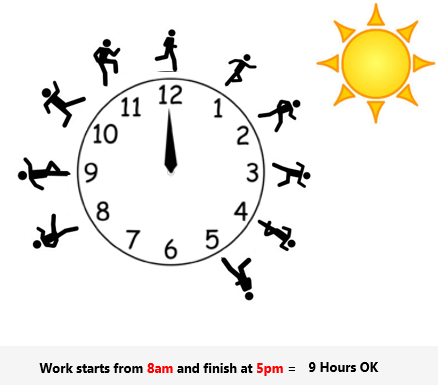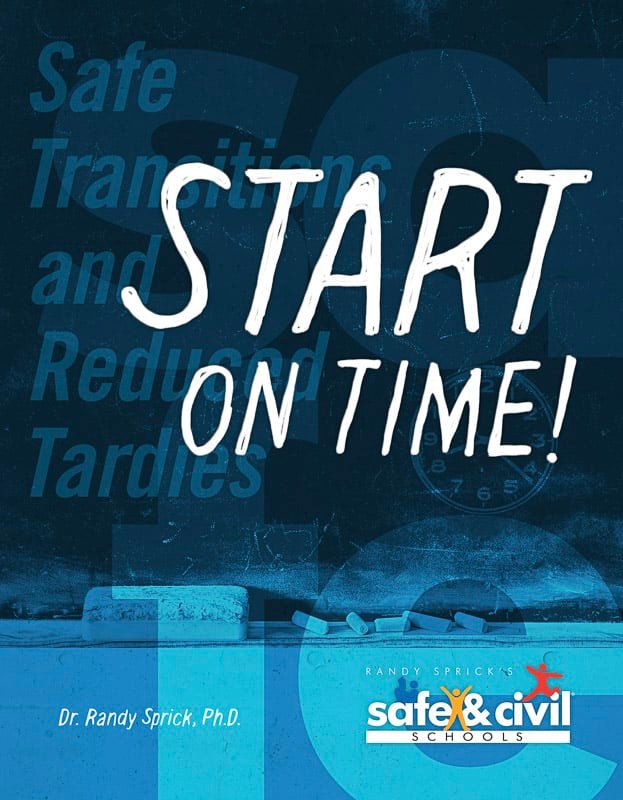Getting the timing right is crucial. “Start time” is more than just a point on the clock.
Knowing when to begin something can make all the difference. Whether it’s a meeting, a workout, or a project, the start time sets the tone for what’s to come. In this blog, we will explore why start times matter and how choosing the right one can impact your day.
You’ll learn the importance of timing in various aspects of life and get tips on how to optimize your start times for better results. Stay tuned to discover how a simple adjustment can lead to success.

Credit: www.tesd.net
Importance Of A Daily Schedule
A daily schedule can make a big difference in your life. It helps you stay on track and manage your time well. With a schedule, you know what to do and when to do it. This makes your day more organized and less stressful.
Benefits Of Structure
Having a structured day brings many benefits. Here are some:
- Reduces stress: Knowing what to expect makes you feel calm.
- Improves focus: A clear plan helps you stay on task.
- Increases efficiency: You waste less time deciding what to do next.
Structure also helps you balance work and personal life. You can set aside time for hobbies, family, and rest. This balance is key to a happy life.
Impact On Productivity
A daily schedule can boost your productivity. When you have a plan, you know what tasks to tackle first. This helps you avoid procrastination.
Here are some ways a schedule improves productivity:
- Prioritizing tasks: You focus on the most important tasks first.
- Time management: You allocate time for each task, reducing the risk of overruns.
- Tracking progress: A schedule lets you see what you have accomplished.
To create an effective schedule, list your tasks and assign time slots for each. Stick to your plan as much as possible. Adjust your schedule if needed, but try to keep a consistent routine.
Setting Priorities
Setting priorities is crucial to effectively manage your time. By focusing on the most important tasks first, you can ensure you are productive and meet your goals. This section will guide you through identifying key tasks and allocating your time effectively.
Identifying Key Tasks
The first step in setting priorities is to identify key tasks. These are the tasks that have the most significant impact on your goals. To do this, you can use the Eisenhower Matrix.
| Urgent | Not Urgent |
|---|---|
| Important | Not Important |
| Do | Schedule |
| Delegate | Eliminate |
Divide your tasks into four categories:
- Do: Tasks that are urgent and important
- Schedule: Tasks that are important but not urgent
- Delegate: Tasks that are urgent but not important
- Eliminate: Tasks that are neither urgent nor important
Allocating Time Effectively
Once you have identified your key tasks, the next step is to allocate your time effectively. Start by creating a daily schedule.
Here is a simple approach:
- List your key tasks.
- Estimate the time needed for each task.
- Block out time in your calendar for each task.
Use tools like Google Calendar or Trello to manage your schedule. Stick to your allocated time blocks to stay on track.
Remember to include breaks. Short breaks can help you stay focused and productive throughout the day.
By setting priorities and allocating your time effectively, you can achieve more in less time. Focus on what matters most, and you will see positive results.
Morning Routines
Morning routines set the tone for the rest of the day. A good start can lead to a productive and positive day. Establishing a consistent morning routine helps in managing stress and boosting energy levels. Let’s explore some key aspects of an effective morning routine.
Kickstarting Your Day
Begin your day with a glass of water. It helps hydrate your body after hours of sleep. Next, a few minutes of stretching can wake up your muscles. It also increases blood flow. Consider practicing mindfulness or meditation. Even five minutes can clear your mind and set a positive tone.
Eating a healthy breakfast is crucial. Choose foods rich in protein and fiber. They keep you full and provide sustained energy. Avoid sugary cereals or pastries. They can lead to a mid-morning crash.
Establishing Healthy Habits
Healthy habits in the morning contribute to overall well-being. Make your bed first thing. It’s a simple task that creates a sense of accomplishment. Plan your day ahead. List three main tasks you want to complete. It gives direction and focus.
Limit screen time in the morning. Avoid checking emails or social media right after waking up. It can start your day with stress. Instead, spend a few quiet moments reflecting or journaling. It can boost creativity and mental clarity.
Exercise, even a short workout, can energize your body. It releases endorphins, improving your mood. A morning routine doesn’t need to be complicated. Small, consistent actions can make a big difference.

Credit: kb.supremainc.com
Time Blocking Techniques
Time blocking techniques help organize your day into manageable chunks. They can boost productivity and reduce stress. By assigning specific tasks to dedicated time slots, you can focus better and accomplish more.
What Is Time Blocking?
Time blocking is a scheduling method. It involves dividing your day into blocks of time. Each block is dedicated to a specific task or group of tasks. This helps in avoiding multitasking and distractions.
Here is a simple example:
| Time Block | Task |
|---|---|
| 9:00 AM – 10:00 AM | Email Check |
| 10:00 AM – 12:00 PM | Project Work |
| 12:00 PM – 1:00 PM | Lunch Break |
| 1:00 PM – 3:00 PM | Client Meetings |
| 3:00 PM – 4:00 PM | Follow-Up Tasks |
Implementing Time Blocks
To start with time blocking, follow these steps:
- Identify your tasks: List all tasks you need to complete.
- Prioritize tasks: Rank tasks based on urgency and importance.
- Allocate time blocks: Assign specific time slots to each task.
- Stick to the schedule: Follow the time blocks strictly.
- Review and adjust: At the end of the day, review your progress.
Some tips to make time blocking effective:
- Use a digital calendar or planner.
- Set reminders for each time block.
- Include buffer times between tasks.
- Be flexible but disciplined.
Implementing these techniques can enhance your productivity. Time blocking turns chaos into a structured day.
Avoiding Distractions
Distractions can disrupt your productivity. Staying focused is key to achieving your goals. This section will help you avoid distractions by minimizing interruptions and creating a focused environment.
Minimizing Interruptions
Interruptions can break your concentration. Here are some tips to minimize them:
- Set boundaries: Inform family or roommates about your work hours.
- Turn off notifications: Disable alerts on your phone and computer.
- Use a ‘Do Not Disturb’ sign: Place it on your door during work hours.
These simple steps can reduce the number of interruptions you face. This helps you maintain your focus and productivity throughout the day.
Creating A Focused Environment
A focused environment can enhance your ability to concentrate. Here are some strategies to create one:
- Choose a quiet space: Find a place with minimal noise.
- Organize your workspace: Keep your desk clean and clutter-free.
- Use comfortable furniture: Ensure your chair and desk are ergonomic.
Creating a focused environment can significantly improve your productivity. It helps you stay on task and avoid unnecessary distractions.

Credit: www.chsglobe.com
Break Management
Taking breaks at the right time is crucial for maintaining productivity and focus. Break management involves understanding the importance of breaks and implementing effective strategies to make the most of them. This section will explore why breaks are essential and how to manage them effectively.
Importance Of Breaks
Breaks prevent burnout and keep your mind fresh. Working for long periods without rest can lead to mental fatigue. This reduces your overall productivity. A short break can re-energize you. It helps maintain a high level of focus.
Breaks are also important for physical health. Sitting for too long can cause various health issues. Regular breaks help you move around. They reduce the risk of these problems.
Effective Break Strategies
To make the most of your breaks, try the following strategies:
- Pomodoro Technique: Work for 25 minutes, then take a 5-minute break. Repeat this four times, then take a longer break.
- Scheduled Breaks: Plan your breaks in advance. This helps you stick to a routine.
- Active Breaks: Use break time to stretch, walk, or do light exercises. This keeps your body active.
- Mindful Breaks: Practice deep breathing or meditation. This helps clear your mind.
Using these strategies can improve your productivity. They help you stay focused and reduce stress.
Remember, the goal is to use breaks to recharge. Avoid activities that may drain your energy further.
Evening Routines
Establishing an evening routine can improve your sleep quality and overall well-being. It helps signal your body that it’s time to relax and prepare for the next day. An effective evening routine can enhance your productivity and mood.
Winding Down
Winding down is a crucial part of any evening routine. It’s important to create a calm atmosphere. Turn off bright lights and put away electronic devices. These emit blue light that can interfere with your sleep.
Reading a book or listening to soft music can help you relax. Deep breathing exercises or light stretching can also prepare your body for rest. Consistent winding down activities signal your brain that it’s time to sleep.
Preparing For The Next Day
Preparing for the next day can ease morning stress. Set out your clothes and pack your bag. Make a to-do list for the following day. This can give you a clear idea of your tasks and priorities.
Reviewing your schedule can help you feel more organized. You can also prepare your breakfast and lunch to save time. By planning ahead, you can start your day with a sense of control and readiness.
Tools And Apps
Managing your time well can improve productivity. Tools and apps help schedule tasks. They remind you of important events. These tools and apps can simplify your day. They assist in organizing your schedule efficiently.
Popular Scheduling Tools
Several tools are popular for scheduling. Google Calendar is well-known. It syncs with your email. You can set reminders. Microsoft Outlook Calendar is another option. It integrates with your email and tasks. Trello helps with visual task management. It uses boards and cards. Asana is great for team collaboration. It allows task assignments and deadlines.
How To Use Scheduling Apps
Using scheduling apps is easy. First, download the app. Create an account if needed. Add tasks or events. Set reminders or deadlines. Use the repeat feature for regular tasks. Sync the app with other devices. Check your schedule daily. Adjust tasks as necessary.
Frequently Asked Questions
What Is Start Time?
Start time is the specific moment an event begins. It marks the commencement of an activity or task.
Why Is Start Time Important?
Start time ensures punctuality and helps in managing schedules effectively. It helps in optimizing productivity.
How To Determine A Start Time?
To determine a start time, consider the event duration and participants’ availability. Use scheduling tools for accuracy.
Can Start Time Affect Productivity?
Yes, start time can impact productivity. A well-planned start time can enhance focus and efficiency.
Conclusion
Starting on time brings many benefits. It boosts productivity and reduces stress. Good planning ensures smooth workflow. Consistency in timing builds trust and reliability. Small steps make a big difference. Practice punctuality daily. It becomes a habit. Respect your time and others’.
Start now and see positive changes. Remember, every minute counts.


